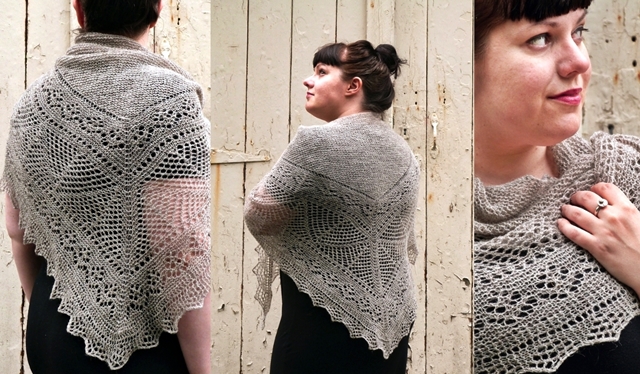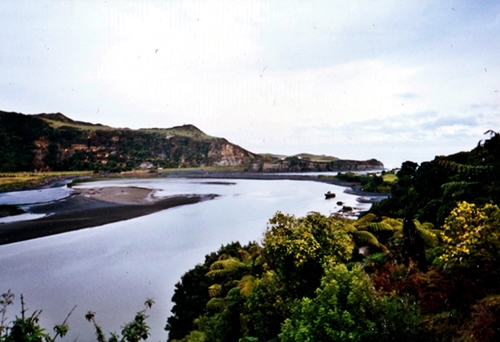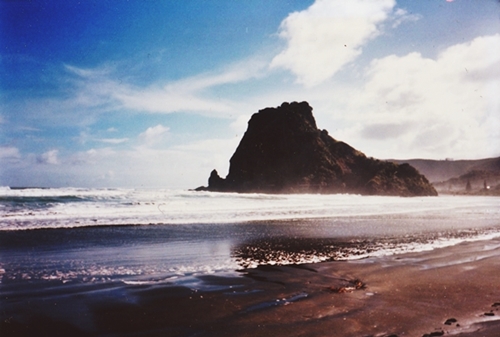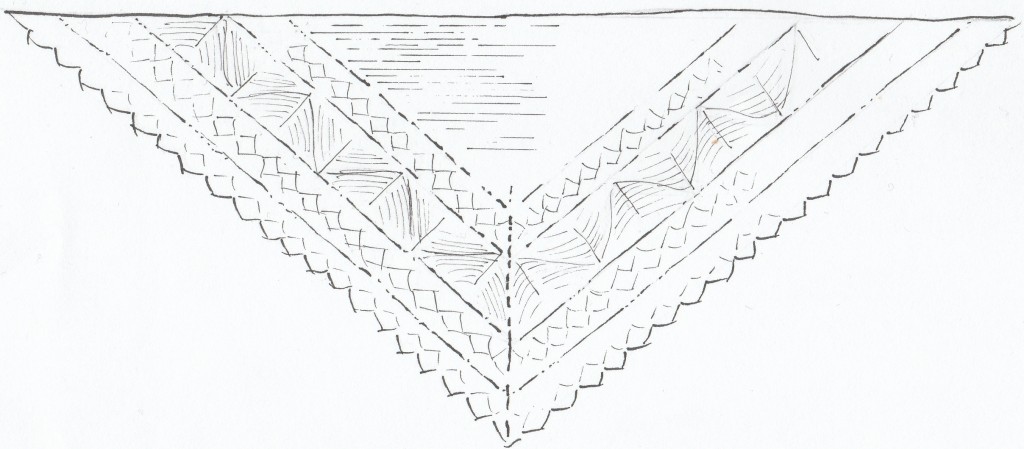 The Mahy shawl is the second instalment in the Authors & Artists series. It is a traditional hap shawl knitted in Shetland Organics 1-ply and some of the motifs are traditionally Shetland - yet the shawl also takes it cue from a place on the other side of the world.
The Mahy shawl is the second instalment in the Authors & Artists series. It is a traditional hap shawl knitted in Shetland Organics 1-ply and some of the motifs are traditionally Shetland - yet the shawl also takes it cue from a place on the other side of the world.
I was 13 when I first came across Margaret Mahy's The Changeover. It was a YA book about Laura Chant who lived with her divorced mother and her baby brother in Gardendale - a modern suburb of Christchurch, New Zealand. I recognised myself in Laura: she was stubborn, a head too old on her shoulders, and she felt uneasy in her surroundings. Many's book was cleverer than I realised when I first devoured the book. It is a subtle post-colonial book about finding your own identity in a young country; it references Alice in Wonderland constantly; and Mahy plays riffs on rites of passage. I had my first literary crush on the male protagonist, Sorry Carlisle - the complicated boy with labyrinths in his eyes.

Waitangi River
But it was the mundane exoticism of New Zealand that caught my eye. I recognised the remoteness, the myths woven into every branch and stone, and the complexities of the past mixed with the present.
The Changeover sparked a lifelong romance with New Zealand. I would later drive through Paraparaumu - a town dismissed by Laura in the book - and I felt like I was walking inside the book. I re-read the book at least once a year and I still find myself reflected in it.

Lion Rock on Piha Beach
The Mahy shawl owes its name and soul to a New Zealand author - but much of its philosophy belongs to another Margaret from New Zealand: Margaret Stove. Stove is a lace knitter and designer who I admire very much. Her book Wrapped in Lace is not just a fine collection of patterns, but Stove also writes passionately about the need to develop a local lace vocabulary. While Stove understands and respects lace knitting traditions, I am utterly fascinated by Stove's insistence that her work needs to reflect her landscape and flora. In the book she charts local New Zealand flowers and plants - kowhai features heavily together with ferns - and I find that overwhelmingly inspirational. Why should we not respond to the world in which we live? Why should we not design inspired by what we see around us rather than base our work upon age-old stitch patterns that do not reflect our own lives?
The Mahy shawl uses old Shetland patterns as inserts, but the main motif is inspired by the stylised ferns I saw carved everywhere in New Zealand. The carved section is reflected by the applied border which is a smaller version of the carved section.

I wanted to knit a hap shawl out of the beautiful yarn, but the design itself surprised me. I find knitting is a form of autobiography, but I had not expected to dwell on my love for The Land of the Long White Cloud. And yet it seems so obvious to explore a landscape which has had a huge impact on me: Laura Chant's infinitely complex inner life in Mahy's book, the music from Karekare beach, the lighthouse dwellers, the man on the Lone Kauri Road, and even comedy. For a myriad of reasons, this seems the most personal of designs.
You run from the river, when it long ran over you..

